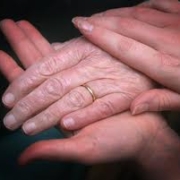Unless we reverse demographic trends the generation that killed its children may well be killed by its children
Low fertility rates and an ageing population will present Europe with a big economic challenge. This was one of the points made in a study published by the European Commission at the start of the month.
The ‘Third Demography Report’ found that the number of children per woman has increased from 1.45 children, at the time of the last report in 2008, to 1.6. Nonetheless, this is still substantially below the level of 2.1 children that is required to maintain a stable population.
As well, life expectancy is increasing, which will push the trend to an ageing population. Already in four countries – Bulgaria, Lithuania, Latvia and Romania – the population is decreasing due to a combination of more people dying than are born and emigration.
The report also found that the mean age of women at childbirth has been postponed significantly over the course of the last three decades.
The highest age at childbirth in 2009 was in Ireland, at 31.2 years. Italy was close behind, 31.1, while the lowest was in Bulgaria, 26.6, and Romania, 26.9. In 13 of the 27 EU countries women tended to have their children when they were aged 30 or over.
The number of people aged 60 and above in the EU is rising by more than two million every year, which is roughly twice the rate observed until about three years ago.
Currently half the EU-27 population is aged 40.9 years or over.
The share of the population aged 65 and over is projected to increase from 17.4% in 2010 to 30.0 % in 2060
The result of this will be an increased burden on those of working age to provide for social spending expenditure needed for an ageing population.
This is even more obvious when looking at the projections regarding the number of people of working age, between 19 and 65, compared to those who are dependent, due to their youth or having retired.
At the moment the EU has about three people of working age for every two dependent people. By the year 2060 it is forecast that will be almost one person of working age for every dependent person aged under 19 or over 65 years in the EU-27.
Europe is hardly alone in experiencing low fertility. In the United States the birth rate has dropped in the period 2007-09, according to statistics published in the March data brief by the Centers for Disease Control (CDC).
Another feature they remarked on was that for the first time in many years the rate of births to unmarried women declined. Nevertheless, births to married women declined even more, which meant that 41% of all births in the US were to unmarried mothers, an all-time high.
In spite of the serious problems caused by low fertility and ageing the United Nations is remaining still set on its objective of reducing fertility at all costs. The 44th session of the Commission on Population and Development will convene from April 11-15 in New York.
The press release announcing this stressed the need to extend family planning and to rapidly reduce fertility in Africa and Asia.
The situation in developing countries is quite different as comparative population pyramids dramatically demonstrate. Lower life expectancy and high birthrates mean that there is always a large number of workers available to support the elderly.
In the West we have a growing elderly population supported by a smaller and smaller working population – fuelled by elderly people living longer and an epidemic of abortion, infertility and small families.
These demographic changes, together with economic pressure from growing public and personal debt, and increasing pressure for a change in the law to allow euthanasia, produce a toxic cocktail indeed.
Some European politicians and economists have been chillingly open about the economic incentives for euthanasia. Jacques Attali, the former president of the European Bank for Reconstruction and Development, said in 1981 in an article inL’Avenir de la vie: ‘As soon as he gets beyond 60-65 years of age, man lives beyond his capacity to produce, and he costs society a lot of money… euthanasia will be one of the essential instruments of our future societies.’
Unless something is done to reverse the demographic trends, economic necessity, together with the ‘culture of death’ ideology which is becoming more openly accepted, may well mean that the generation that killed its children will in turn be killed by its own children.













Leave a Reply
Want to join the discussion?Feel free to contribute!